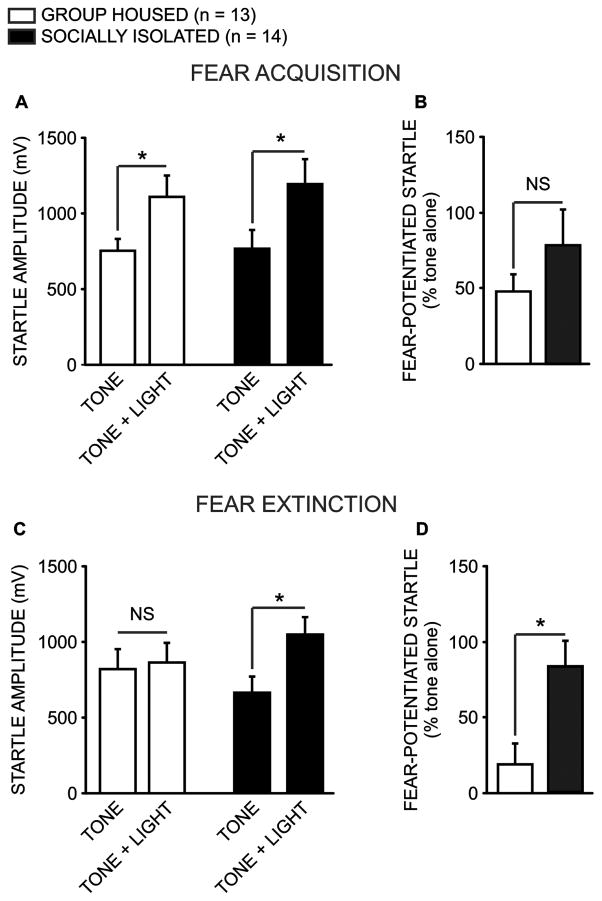Figure 3.
Social isolation disrupts extinction learning. Group housed (GH n = 13) and socially isolated (SI n = 14) animals acquired comparable fear conditioning, as evidenced by similarly potentiated responses to a startle-inducing noise burst in the presence of a light that had been paired with a footshock 24 hours prior to testing (a; p = 0.345). As such, there was no difference between groups in the magnitude of fear-potentiated startle to the noise burst in the presence of the light (b; p = 0.411). However, GH and SI animals differed significantly in their ability to acquire extinction learning; specifically, following three consecutive extinction sessions during which the footshock-paired light was presented alone repeatedly, GH animals no longer exhibited a potentiated startle to a noise burst when presented coincidently with the light (c; p = 0.343). Conversely, SI animals continued to exhibit a potentiated startle response to the light-paired noise burst, relative to the noise presented alone (p < 0.001), and as such the groups differed in the magnitude of their fear-potentiated startle response (d; p = 0.036).

